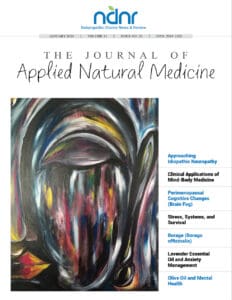Node Smith, ND
Georgetown neuroscientists say they have identified how people can have a “crash in visual processing”; a bottleneck of feedforward and feedback signals that can cause us not to be consciously aware of stimuli that our brain recognized.
How people can have a “Crash in visual processing”
In the Journal of Vision (DOI 10.1167/19.12.20), investigators describe what can occur when the brain is asked to process more information than it can handle. The phenomenon, which they dub a “crash in visual processing,” happens when the neurons busy processing one image are tasked with processing another too quickly, and then either one or both images do not reach conscious awareness.
Prior studies have shown the following
Prior studies have shown that people are rather poor at detecting objects of interests that appear close together in time, even though the human brain can process up to 70 images per second. Our study shows a specific limitation of the visual system and explains why our consciousness cannot keep up. When someone tells you they didn’t see something that occurred in a chaotic situation, maybe they did, but they didn’t know that they did,” said Maximilian Riesenhuber, PhD, the study’s senior investigator, professor of neuroscience at Georgetown.
Study provides evidence for the bottleneck theory
The study provides evidence for the theory that a bottleneck can occur in the neuronal pathway that takes in visual stimuli. That pathway starts at the back of the brain and extends forward, rapidly processing the visual signals up to the frontal cortex (“feed forward”), and then sending them back again to the areas the stimuli were first processed in (“feedback”).
“The feedback wave appears to be crucial for participants to actually become conscious of the stimuli their brains had processed in the ‘feedforward’ pass,” Riesenhuber explains.
Study included a series of EEG experiments
The study included a series of EEG experiments in which participants viewed images of natural scenes streamed to them in short bursts at a rate of 12 per second, and answered how many images contained animals, and also what the animals were.
The crash in visual processing happens when the back of the brain is stimulated again with a second image before the feedforward and feedback loop needed for the first image is completed, Riesenhuber explains.
Conclusions not only are relevant to how, when, and where capacity limits in the brain’s processing abilities can arise
The researchers say their conclusions not only are relevant to how, when, and where capacity limits in the brain’s processing abilities can arise, but also have ramifications that span consciousness to learning and attention.
“In addition to introducing a theory that explains the underlying reason for the lack of awareness, our study also shows how to avoid the neuronal signal ‘crash’ and increase awareness,” explains the study’s lead author, Jacob G. Martin, PhD. “When we experimentally reduced the interference between the feedforward and feedback portions of the two stimuli, we observed improved detection and categorization performance.”
“Such findings are exciting because they could lead to novel methods for accelerating cognitive processing and learning in humans,” he adds.
Source:
1. Martin, J.G, et al. (2019) A crash in visual processing: Interference between feedforward and feedback of successive targets limits detection and categorization. Journal of Vision. doi.org/10.1167/19.12.20.

Node Smith, ND, is a naturopathic physician in Humboldt, Saskatchewan and associate editor and continuing education director for NDNR. His mission is serving relationships that support the process of transformation, and that ultimately lead to healthier people, businesses and communities. His primary therapeutic tools include counselling, homeopathy, diet and the use of cold water combined with exercise. Node considers health to be a reflection of the relationships a person or a business has with themselves, with God and with those around them. In order to cure disease and to heal, these relationships must be specifically considered. Node has worked intimately with many groups and organizations within the naturopathic profession, and helped found the non-profit, Association for Naturopathic Revitalization (ANR), which works to promote and facilitate experiential education in vitalism.

